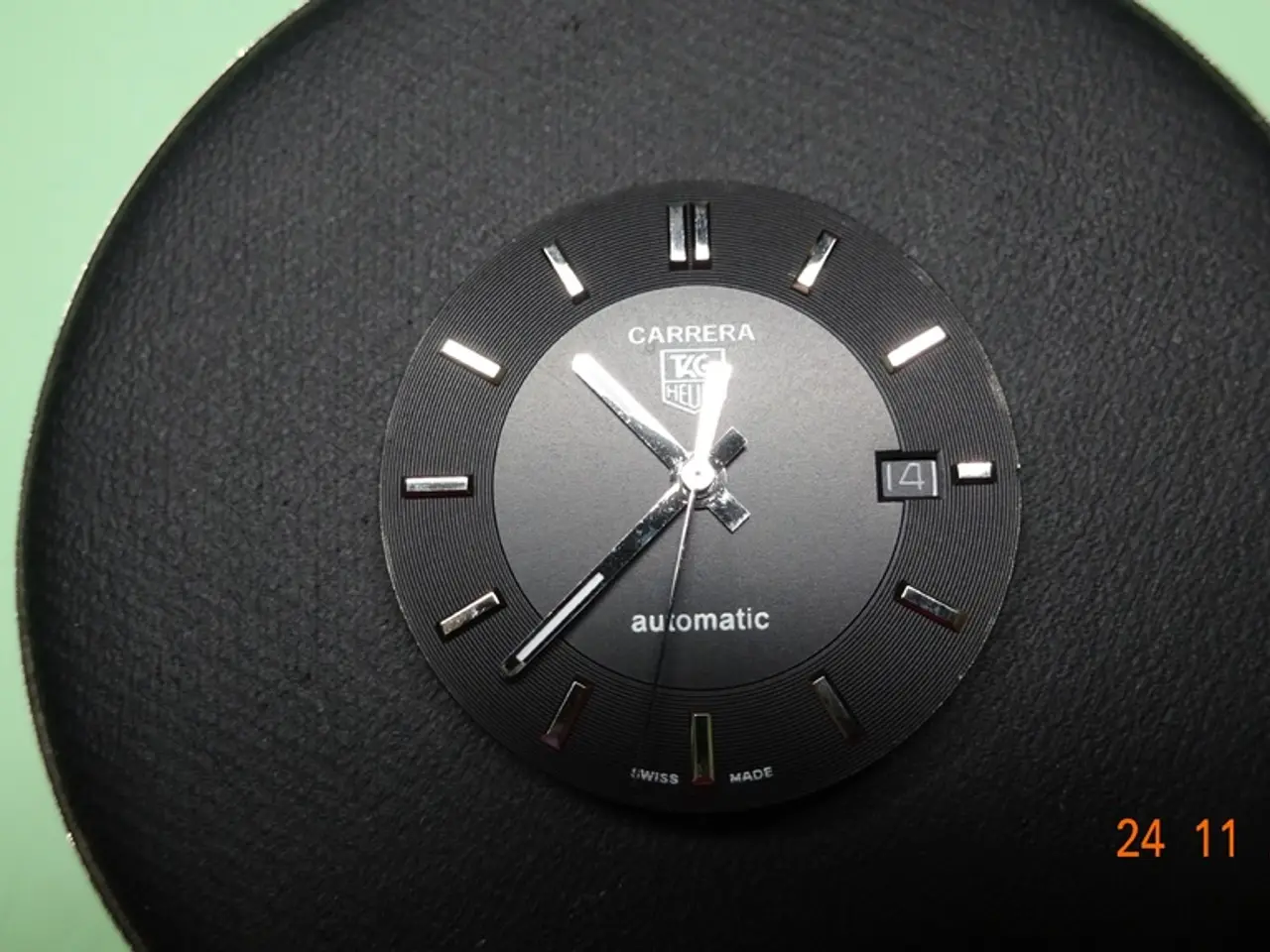2025 One-Hertz Challenge: Echoing Timepiece
In the world of DIY electronics, creativity knows no bounds, and a prime example of this is the shadow clock. This unique timepiece, equipped with LEDs, an ESP8266 microcontroller, and IR activation, offers a blend of modern technology and esoteric design.
Key Components and Design Approach
The heart of the shadow clock is the ESP8266 microcontroller, which manages Wi-Fi connectivity, NTP time synchronization, IR input processing, and LED control. The WS2812B LEDs, individually controlled by the ESP8266, form the digital clock display for hours, minutes, and seconds or other visual effects. An IR receiver module, connected to another ESP8266 GPIO pin, listens for IR remote control signals, enabling users to activate the clock, adjust brightness, switch display modes, or set time manually.
Typical Implementation Steps
- Hardware Wiring: Connect the WS2812B strip's data input to a GPIO on the ESP8266, such as GPIO2. Connect the IR receiver module to an available GPIO, like GPIO4. Provide power and common ground to the LEDs and components, and optionally add a DS3231 real-time clock module via I2C for backup timekeeping when offline.
- Firmware Development: Utilize ESP8266 Arduino libraries, like NTPClient for time sync, IRremoteESP8266 for IR decoding, and Adafruit_NeoPixel or FastLED for WS2812B control. On boot, connect to Wi-Fi and retrieve time via NTP. Optionally save the time to the RTC for persistent keeping. Continuously update the LED display to show the current time and listen for IR remote inputs to toggle power/display mode or manually adjust settings.
- Time Handling: Set appropriate time zone and daylight saving rules in software. Disable continuous NTP after initial sync if an RTC is used for power-off scenarios, or keep syncing periodically for accuracy.
- User Interaction: IR remote commands can control turning the display on/off, adjusting brightness, changing colors or display patterns. Some implementations include a web interface hosted on the ESP8266 for configuring Wi-Fi and display parameters remotely.
The shadow clock's operation is based on a digital microcontroller and a real-time clock module. The LEDs correspond to the usual per-minute graduations found on a regular clock, with the current hour displayed in red, minutes in blue, and seconds in white. When not activated, the clock switches to display colorful animations, making it a decorative piece as well as an easy-to-read timepiece.
It's worth noting that the shadow clock does not rely solely on Wi-Fi for timekeeping. The DS3231 real-time clock module keeps accurate time even when a network connection is unavailable, ensuring the clock remains accurate at all times.
This build is an example of LEDs being used creatively in clock builds, and we encourage our readers to share their unique ways of displaying time. Whether you're a seasoned electronics enthusiast or a beginner, building a shadow clock can be a rewarding DIY project. So, gather your components and let your creativity shine!
- The shadow clock, a smart-home device, utilizes the ESP8266 microcontroller, WS2812B LEDs, and an IR receiver module for its technology-based functionality.
- The DIY shadow clock, with its gadgets like LEDs and smart-home-devices, is an example of modern technology being integrated with creative design, making it a perfect blend of both worlds.




